I already discussed jazz in general and its origin in a former article. As I mentioned before, the term Jazz is used very loosely for nearly every style of music which is not classical or contemporary, like rock or rap.
“Jazz is a broad and complex genre, and so it may seem difficult for those who are first getting into Jazz to know where to start. . . . But Jazz doesn’t need to be complex. You can actually get by with a minimum amount of theory and practice”Stefan Joubert
In this article, I will try to capture some of the basics of jazz.
Some of the main characteristics of jazz are:
- The swing feel or typical jazz rhythm
- The use of 7th chords
- Extended chords with tensions or added extensions forming chords like the sharp 11 (#11) chord, or flat 13 (b13) chord etc.
- The important II V I progression
- The typical walking bass line
- Improvisation over a recurring structure
Starting as an adult beginner, playing jazz could take quite some time just to master the basics.

Swing in jazz
What is swing? Swing is a “feel” that makes one tap with your foot and moves at the beat to try and define it. The normal notes are not played “straight” 8ths as it is called, but it is played with a swing. It means that the 8ths are played like dotted notes where one note is cut shorter and the other played longer. Read an opinion from The jazz piano school:
“Duke Ellington expressed it best when he wrote the tune, “It Doesn’t Mean A Thing If It Ain’t Got That Swing.” Jazz is nothing without the rhythms that create the music. Swing is the entity in jazz that makes you want to tap your feet, or move to the beat.” Brendon Lowe from The Jazz Piano School

How do I play swing?
I would suggest that you practise your scales with an accent on the 2nd note or 2nd beat instead of the 1st beat. In the French time names, it will sound like “fe-ta, fe-ta, fe-ta” with the accent on the “ta” not on the ‘fe” instead of the “ta-fe, ta-fe, ta-fe” sound. This you are thinking in quavers or 8th notes. You have to rather think of dotted quavers, but the dotted note comes second not first.
Practise your scales or tune with this rhythm, to get out of the straight 8 mode, if you are classically trained. This dotted rhythm is however played in a more relaxed way, not in the typical exactness of the classical way. The best would be to listen to jazz as much as possible in order to grasp this “swing”. You will soon get the feel and be able to play it on the keys.
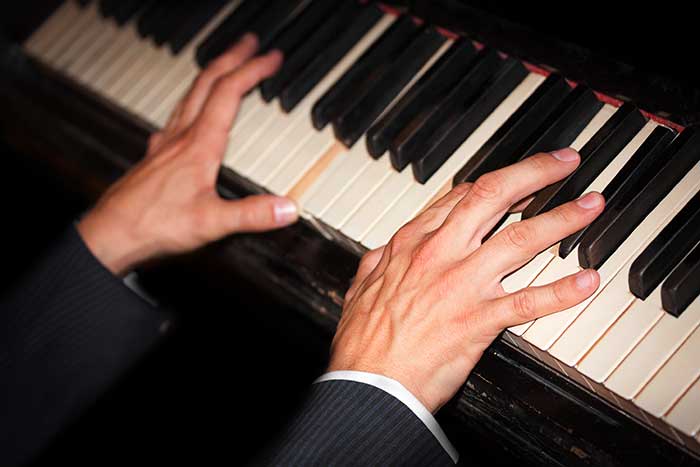
Chords used in Jazz
In the jazz genre, the 7th chords are used for creating music and harmonies. In classical music, the basic triad is mostly used. The main 7th chords in jazz are the major 7th chord, the minor 7th chord and the dominant 7th chord. These chords are built from the bass note or root upwards with adding 3rd on top of each other. Practically it means you will be starting on the bottom note or bass note then skip a note and play the 3rd note. This process of play one skip one play one skip one, gets repeated.
The basic 7th chord has 4 chord tones and is played together. This forms the basic 7th chord. So if you will be playing C major 7th chord you will start by playing the C note, skip the D, then play the E then skip the F, then play the G, then skip the A and play the B. This is the basic way of building your 7th chords on the root or base note. The bass note is the 1st degree of the scale you use on which you build the chord.
In the article on “The basic chords used in jazz for the adult beginner”, chords are explained more fully.
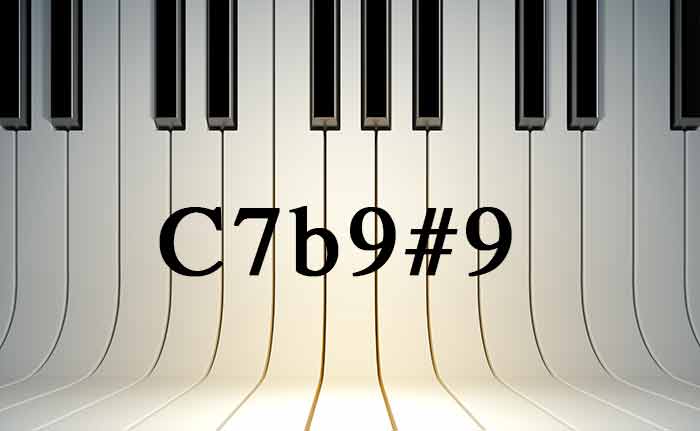
Jazz Chord symbols
Let’s look at the minor 7 (b5) as an example.
The Minor 7 (b5)
Here a minor 7th chord with the normal minor triad plus flattened 7th is played, but as shown the 5th degree will be specifically flattened, meaning that one plays the note closest to the LEFT (lower), indicating that the sound becomes flatter or lower so to speak.
Here is another example:
The Maj 7 (#11)
In the Maj7 (#11) the 11th degree (which is actually also the 4th degree, but it is seen as an 11th because it is reckoned as an extension AFTER the 7th note. In the case of the sharp 11 (#11) – the sound is sharpened or made higher, resulting in one playing the note closest to the right-hand side. This is just to give you two examples. As mentioned there are many chords and symbols available.
The Dominant 7 (b9)
The normal dominant 7th chord will be used but the 9th will be added in its flattened form. The 9th is derived by counting 3 notes upwards from the 7th degree. Its actually also the 2nd degree but it called the 9th because we are working with a 7th chord and not a normal triad. If you were using a normal triad with an added 2nd, it will not be called a 9th here, as the 9th only applies when your root chord is a 7th chord.
Extensions or tensions
These are added tones to the basic 7th chord, which gives the chord a strong character or tension. We already discussed the min7 (b5) and the maj 7 (#11). These are added tones like the 9th, the 11th, and 13th which can also be flattened of sharpened like in the #11 or sharp 11 as an example.
Tensions or Add-ons or Extensions to 7th Chords: The 9th, the 11th and the 13th
We cannot, however, play simple triads and seventh-chords, and must elaborate on the chord symbols given, adding 9ths, 11ths, and 13ths, where appropriate.
We can play simple triads and seventh chords, but if you want to create that “real” jazz sound its important to elaborate on your chords and given chord symbols, adding 9ths, 11ths, and 13ths, where appropriate. These add-ons are called extensions. It means we add more 3rds on top of the stack of three existing 3rds. This will give us chords like the 9th chord, 11th, and the 13th. They can be natural, flattened or sharpened. There are amazing different chord sounds that can be built with these extensions added.
The tension created by extensions
When you play the chords with extensions added, it will give distinct sounds that the player will later be able to recognize. These “bity” sounds that give the chords specific character are called tensions. Jazz is full of these tensions that give it it’s sound. You will find that jazz harmony most times moves over many different chords and keys easily without having to resolve, as in the classical style where you normally clearly feel the pull of the key. In the Jazz styles, because of the 7th chords used, the music can flow from nearly any chord to any other chord, giving it the jazz sound with all its tensions and feel.
Final words on Jazz Chords Symbols
You will come across many symbols in jazz writing like which is intriguing and sometimes quite overwhelming. If you understand the basic scale degrees and sharpening and flattening of degrees you can easily work out the notes of chords. In a next article, we look more closely at jazz chord symbols and understanding it.
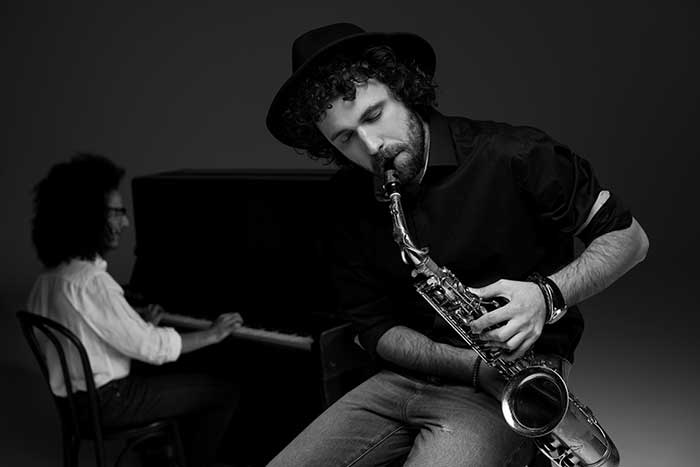
The Most important Jazz progression: II V I
We have only touched on the basic structure of chords, but there is, of course, the aspect of harmony and the most important progression used in jazz which is called the ii V I progression. We discuss this in a later article in more detail.
This progression forms the basis of many a jazz standard and it will be worth it for you to practise the ii-7 (b5) V7 Imaj7 (the basic ii V I) progressions in all the different keys so that you will have a good repertoire of chords all over the keyboard to play from. This progression is normally well practised in all the different keys. The circle of 5ths is used for practising in all the different keys. It’s quite a lot of work, but worth it. It’s advisable to give attention to voicings too.
You can read a lot more about the II V I progression in the article “The importance of the II V I progression“.
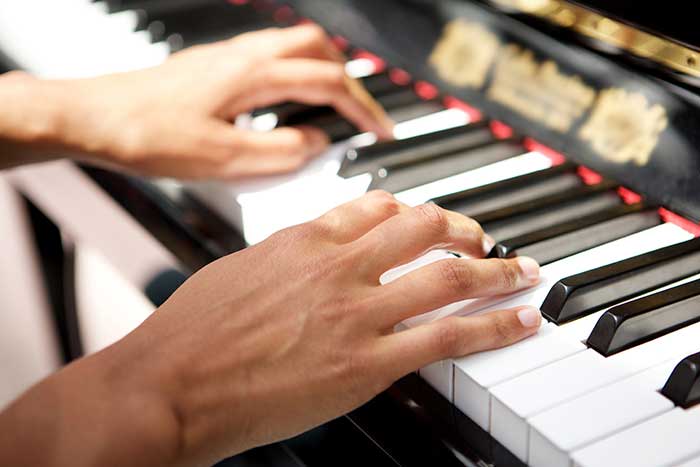
Voicings
What are voicings?
With voicings, I mean the way the chord is played on the piano. Chords sound much nicer if the chord is not played just in the play one, skip one way or as a 1 3 5 7 but the tones are moved between the hands and not specifically played in the 1 3 5 7 consecutive way. There are also the adding of extra notes called extensions or tensions that we will discuss later. These added tones create real jazz sound and should be added to chords as soon as you have mastered the basic chord layout.
When playing chords or voicings, some chord tones may be omitted and others not at all.
The most important tones in the chord are the root – which is often played by the bass player should you play in a band.
The 3rd is very important as it gives us a distinct major or minor sound. (The b3 is always minor and the normal 3 is major.)
The 5th degree is less specific and may be omitted.
The 7th note plays an important role.
In jazz piano, the voicings are normally played between both the hands. The melody with the upper right-hand fingers, the bass note with the lower finger of the left hand and the rest of the chord is spaced between the two hands.
One can also play a bass note and then jump to the chord with your left hand. This is called a stride style.
There are many different voicings for each chord. Voicings will de be discussed in a separate article.
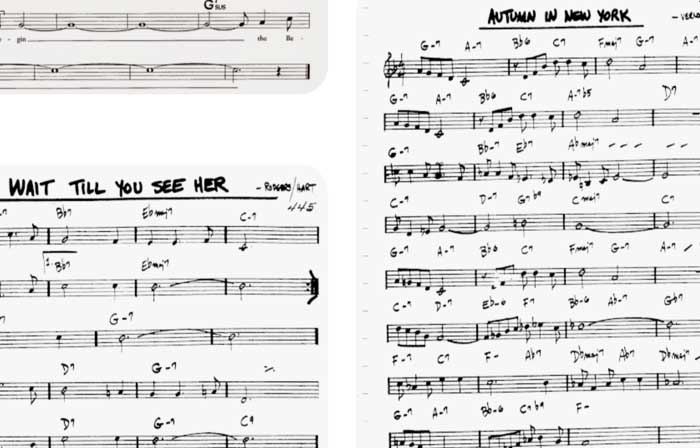
The lead sheet
The lead sheet is the written music used in jazz. Most lead sheets are found in the Real Book. It consists of well-known jazz songs has been given down from jazz players to jazz players over the years, normally by ear. Fortunately, someone took the trouble to start to compile the well-known songs in a few books, from there the Real books. Real books make it easy for today’s students in their jazz training, as well as for a band getting together to “jam” “Jam” means playing music on the spot without being rehearsed.
Understanding the lead sheet
The lead sheet has a single stave with the treble clef, key signature and the time signature like ¾ time or 4/4 etc. The lead sheet mainly consists of the melody (with lyrics sometimes) and chords written on top of the melody line. Because there are less notes to read, reading is quite easy with a single notation melody line.
The lead sheet makes it easy for musicians to quickly and easily learn songs, jam together and sightread their music.
The melody line
The melody line is written on the stave in the treble clef and is played by the right hand on the piano. This melody can also be played by other treble clef instruments. Interpretation and rhythm are mostly left to the musician to feel or create.
Chords
The chords are played between the two hands. The chord symbol indicates the root note or bass note or the chord, which is played with the left hand in solo jazz piano playing. If the chord is C major 7, it means that the bass note will be C, played on the lower part of the piano. This means that all the chords given indicate the bass notes that needs to be played.
The bassline
The bassline can consist of a single bass note or a walking bass line, which is very well known in jazz. The walking bass is as it says – a walking bassline. When moving from one chord to another, the player will play the given bass note then add a passing note before playing the net bass note. The added note is not part of the chord and is a passing note filling in a beat and giving that walking moving feel which is typical jazz. It will usually be 4 beats per bar or double that depending on the speed etc.
Playing with a band
When the piano is part of a band, the pianist is not supposed to play the bass notes of the chords, as the bass note then becomes the line for the bass player to play. This means that in the case of the band playing, you have to use voicings which omits the bass notes.
Solo jazz piano playing
The chords are played in solo jazz playing with both hands or with the left hand only, while the right hand improvises over the chords. Playing the chords with the left hand and playing the melody with the right hand or improvising with the right hand is a good way to start your development of jazz improvisation.
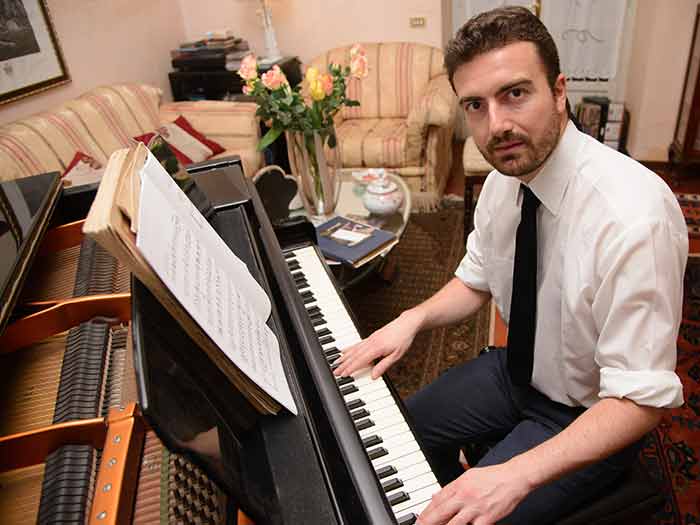
Finding a good jazz tutor or school
I’ve gone through quite a few online YouTube tutorials on playing some chairs standards, to be honest, I think it’s really important to find yourself a “live teacher” maybe a Skype teacher or online teacher rather than doing jazz with tutorials. There are so many available and only a few that are really worth it but the tricky part is so many tutorials that one really do not know which one to follow it would be best to get personal training from a person that from a jazz musician or a jazz music teacher.
You can study jazz with us in person in the City of London or Marylebone. Please see our jazz piano courses page.
You can also study jazz online with us via Zoom, Skype, FaceTime, GoToMeeting or another provider of your choice. Please see our online jazz piano lessons page. (You can now learn jazz from anywhere in the world and get started immediately!)
Well, time to start practising with amazing new chords and harmonies. Do enjoy your creating and playing!







